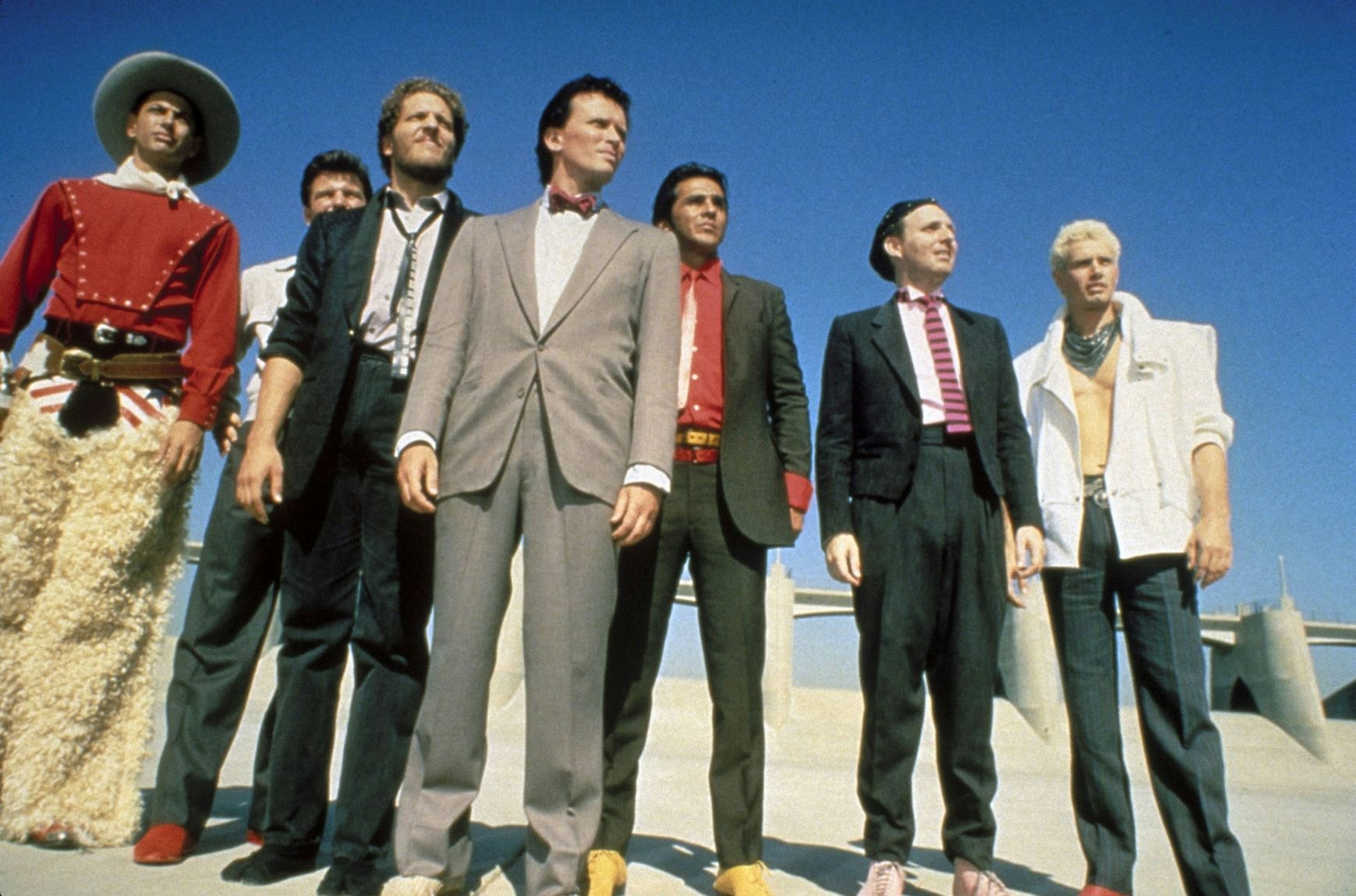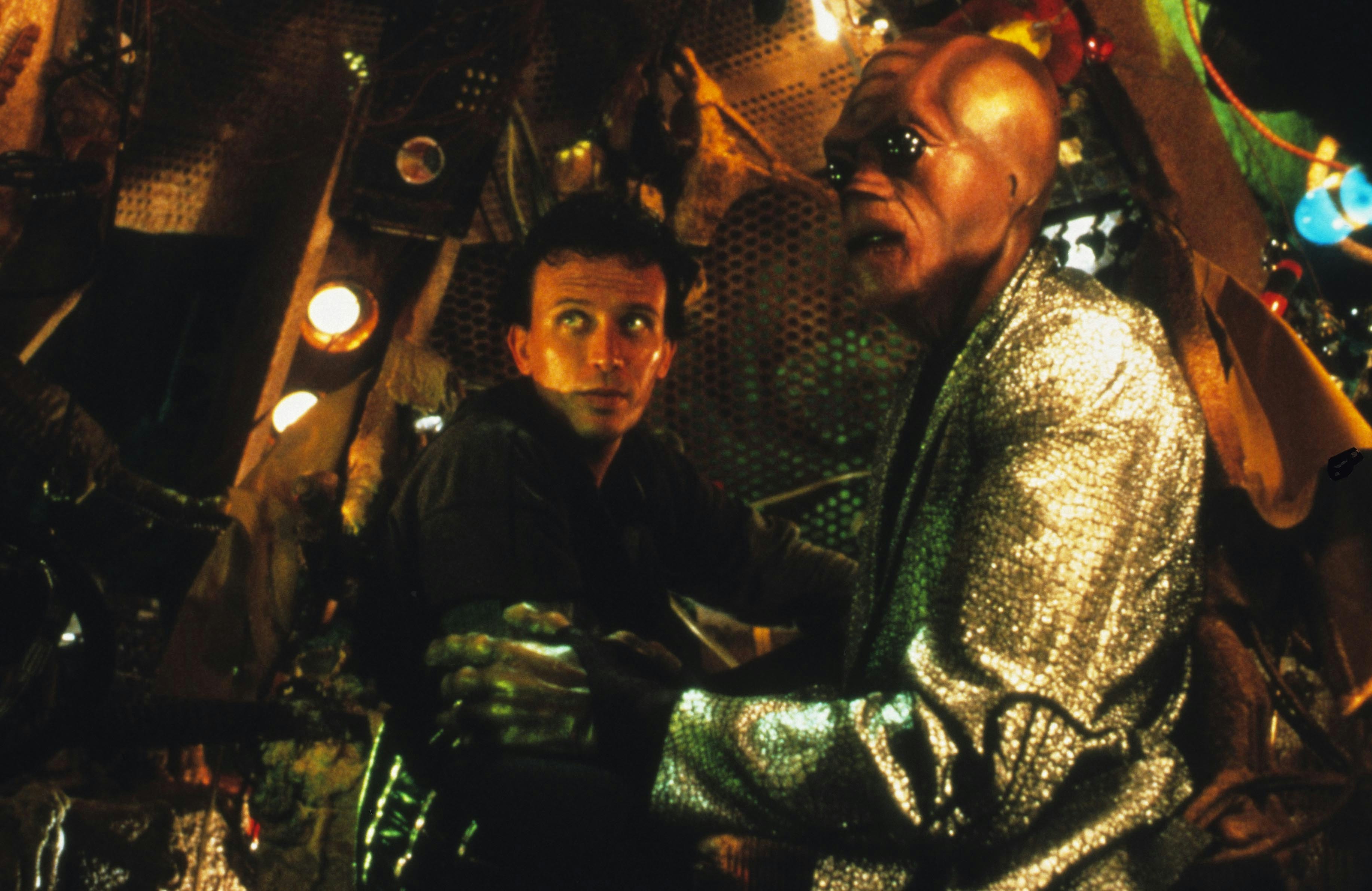
Science fiction comedies are hard to pull off. For every Back to the Future or Ghostbusters, there’s a Howard the Duck or Evolution. The ‘80s, in particular, were lousy with sci-fi comedies, but that doesn’t mean they were all just chasing a trend. Among all the decade’s cult sci-fi films, one stands apart because there’s never been a movie like it before or since. And while it’s a bit obscure, the strange and charming mishmash of The Adventures of Buckaroo Banzai Across the 8th Dimension has inspired geeky artists for four decades.
For all of its quirkiness and brazen genre-busting, the singular nature of 1984’s Buckaroo Banzai is its most enduring feature. It’s not perfect, but as a go-to cult favorite of many artists, writers, and fans, revisiting Buckaroo Banzai 40 years after its release reveals a fantastically unique sci-fi film.
Buckaroo Banzai represents a kind of alternate universe of ‘80s pop culture. If Back to the Future hadn’t happened a year later, and if star Peter Weller hadn’t gone on to play RoboCop in 1987, it's conceivable that Buckaroo Banzai would be the ultimate symbol of ‘80s kitch sci-fi. You’ve got quirky mad scientists, rocket cars, ‘80s blazers, and a rock band, all traits associated with Marty McFly’s far more famous adventure.
The movie’s circuitous story centers on a world-famous scientist and rock star named Buckaroo Banzai (Weller), who travels around with a group of misfits called the Hong Kong Cavaliers. Within the first 20 minutes, we see Buckaroo take a rocket car through a mountain and into another dimension, perform a last-minute life-saving surgery, and lead his band in a set while growing concerned about a suicidal woman in the audience, who seems to be the twin of his long-lost lover.
Soon, however, we learn of a war brewing between two kinds of aliens, the Black and the Red Lectroids, not to mention the threat of the escaped Dr. Emilio Lizardo ((John Lithgow), who’s furious at Buckaroo for perfecting a technology he originally developed with Buckaroo and Dr. Tohichi Hikita (Robert Ito). Oh, and Dr. Sidney “New Jersey” Zweibel (Jeff Goldblum) has just joined the gang, so keep that in mind.
If you can buy all of this as being remotely plausible, then you’ll probably have a good time. Created by novelist Earl Mac Rauch and screenwriter/director W. D. Richter, Buckaroo Banzai is off-kilter and doesn’t much care if you’re following its wild, meandering story.

Retroactively, this feels like a group audition for sci-fi celebrities who’ve all been jammed into one movie. With a massive ensemble cast that includes Rosalind Cash, Christopher Lloyd, Vincent Schiavelli, Ellen Barkin, John Lithgow, Clancy Brown, and Jeff Goldblum, Buckaroo Banzai can feel like you’re watching Wes Anderson adopt the stylistic sensibilities of Repo Man. Although not all these actors were as well known then, cramming so much talent into such a strange movie gives Buckaroo Banzai a strange sense of unnecessary maximalism. There are a lot of characters to keep track of, and most of them are played by someone notable.
But the weaknesses of Buckaroo Banzai are also its strengths. This is no sanitized Stranger Things version of the ‘80s; it’s messy as hell. Everything looks broken, and everyone looks disheveled. Even the peaceniks are packing heat, and in the rock band scene you get the sense you’re watching some kind of yuppie Wild West world. Patrick Bateman wouldn’t be out of place here. It’s charming, but the gee-whiz adventure still feels awfully seedy.

It can be a tricky watch in 2024 — the film seems to start and stop half a dozen times in the first hour — but its cult reputation as an underappreciated, singular film is deserved. In Ready Player One, Olivia Cooke’s Sam declares she “likes Buckaroo Banzai,” after the lead character, Wade Watts, cosplays as Buckaroo at a party. Fairly or not, this is the current legacy of Buckaroo Banzai, a Gen-X password into an inner circle of geekdom.
Unlike true ‘80s sci-fi classics like They Live, Alien, or Blade Runner, the nitty-gritty quirks of Buckaroo Banzai might not make sense to future generations. It’s a cinematic masterclass, but the precise lesson remains elusive. Trying to puzzle it out, however, is worth the ride.







